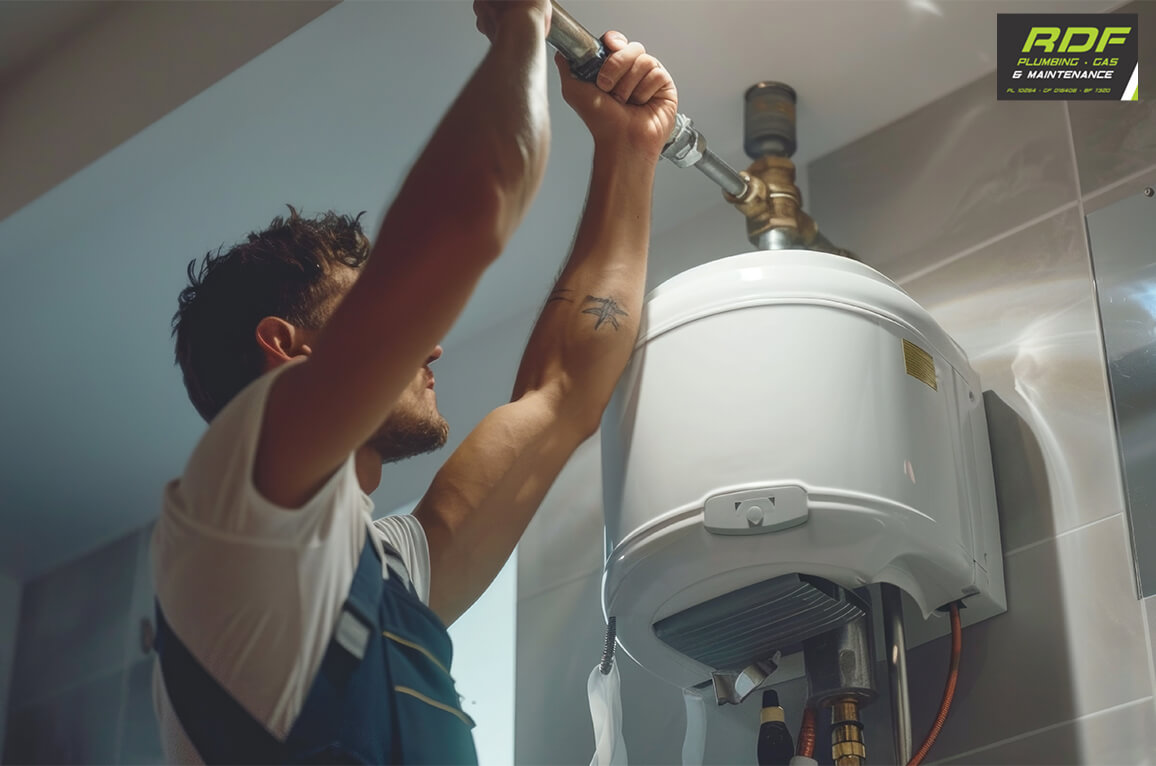Common Mistakes to Avoid During Gas Hot Water Heater Installation
When it comes to upgrading or replacing your home’s hot water system, installing a gas hot water heater can be an ideal choice. These systems are renowned for their energy efficiency, reliability, and cost-effectiveness, making them a popular solution for Australian households. However, gas water heater installation isn’t without challenges. If not done correctly, it could lead to inefficiencies, safety hazards, or premature system failure.
To help you avoid potential headaches, here’s a blog on common mistakes made during gas hot water heater installation and how to prevent them.

1. Improper Flue Pipe Installation
One of the most critical components of gas hot water heaters is the flue pipe. This pipe safely ventilates harmful gases, like carbon monoxide, outside your home. Improper installation of the flue pipe is one of the most frequent mistakes. Common errors can be a lack of upward pitch, failing to seal joints, or using incorrect materials for the pipe itself.
Make sure the flue pipe has a slight incline towards the outside to prevent back-drafting, where
gases re-enter your home. Only use materials specifically designed for gas heaters, such as stainless steel or aluminium pipes, as these are built to withstand heat and corrosion.
Professional installers always check for secure seals at pipe joints to prevent any leaks. Attempting this without proper knowledge can lead to severe safety risks, so relying on expert installation is crucial.
2. Incorrect Gas Line Connections
Gas line connections must be accurate and secure to ensure the heater functions efficiently and safely. A common mistake made by DIY enthusiasts or untrained individuals is using improper fittings, resulting in leaks. Additionally, underestimating gas line capacity for the unit’s requirements may lead to poor performance. Only use certified gas fittings and connections that comply with Australian standards. Before installation, confirm that the existing gas line has adequate capacity to meet the demands of your new system. This may involve consulting a licensed professional who can calculate the correct gas line sizing based on the type and size of your gas heater.
Remember, tampering with gas lines without the necessary expertise isn’t just risky, it’s also illegal in many regions of Australia.
3. Lack of Proper Ventilation
Gas hot water systems generate heat and fumes that need to be carefully ventilated. Skimping on ventilation can increase the risk of carbon monoxide build-up, posing danger to everyone in your home. Unfortunately, ventilation is often overlooked when systems are installed in confined spaces like small utility rooms or basements.
Ensure the installation area has sufficient airflow to prevent the accumulation of toxic gases. Open windows, air vents, or exhaust systems might be required, depending on the location’s design. A licensed plumber will assess the space to determine proper ventilation requirements and advise if alterations are needed prior to installation.
4. Ignoring the Energy Star Rating
Choosing a gas hot water heater without checking its Energy Star rating can lead to higher operating costs and energy waste. Many homeowners focus solely on the system’s upfront cost without considering long-term savings from energy-efficient units.
Look for heaters with a high Energy Star rating, which indicates optimal efficiency and reduced energy use. While these units may have a slightly higher purchase cost, they often pay for themselves over time through lower gas bills. Prioritizing efficiency also aligns with Australia’s commitment to lowering greenhouse gas emissions.
5. Failing to Secure the Unit Properly
Improper securing of the system during gas hot water heater installation can lead to stress and instability. This is especially problematic in areas prone to natural disasters like high winds or minor earthquakes, where loose heaters pose additional risk.
Always mount the system according to the manufacturer’s guidelines, ensuring it’s firmly secured to the wall or floor. This prevents unnecessary strain on plumbing connections and keeps your system stable, even in adverse conditions.
6. Misjudging Household Water Demand
Another issue common during installation is choosing the wrong system size. For example, opting for a tank that’s too small leads to insufficient hot water during high-usage periods, while an oversized system wastes energy.
Assess your family’s hot water usage before choosing a system. Smaller households may benefit from a tankless, instantaneous gas heater, while larger families are better suited to a gas storage unit with a higher capacity. Seek help from an experienced plumber who can recommend the appropriate system size based on your household’s specific needs.

7. Ignoring Installation Safety Codes
Gas water heater installation must adhere to stringent safety codes and standards in Australia. Not following local regulations can result in fines and compromised safety. Always hire a licensed plumber familiar with Australian safety codes. Licensed professionals in Rockingham not only ensure compliance but also help with permits if required, taking the hassle out of the installation process.
While it may be tempting to save money by attempting a DIY installation or hiring an unlicensed installer, the long-term risks far outweigh the initial savings. Professional plumbers are equipped with the skills, tools, and knowledge to ensure your gas water heater installation is done safely, effectively, and in line with Australian regulations.
At RDF Plumbing, our licensed professionals are experienced in gas hot water heater installation, ensuring that every step of the process is handled with precision and care.
